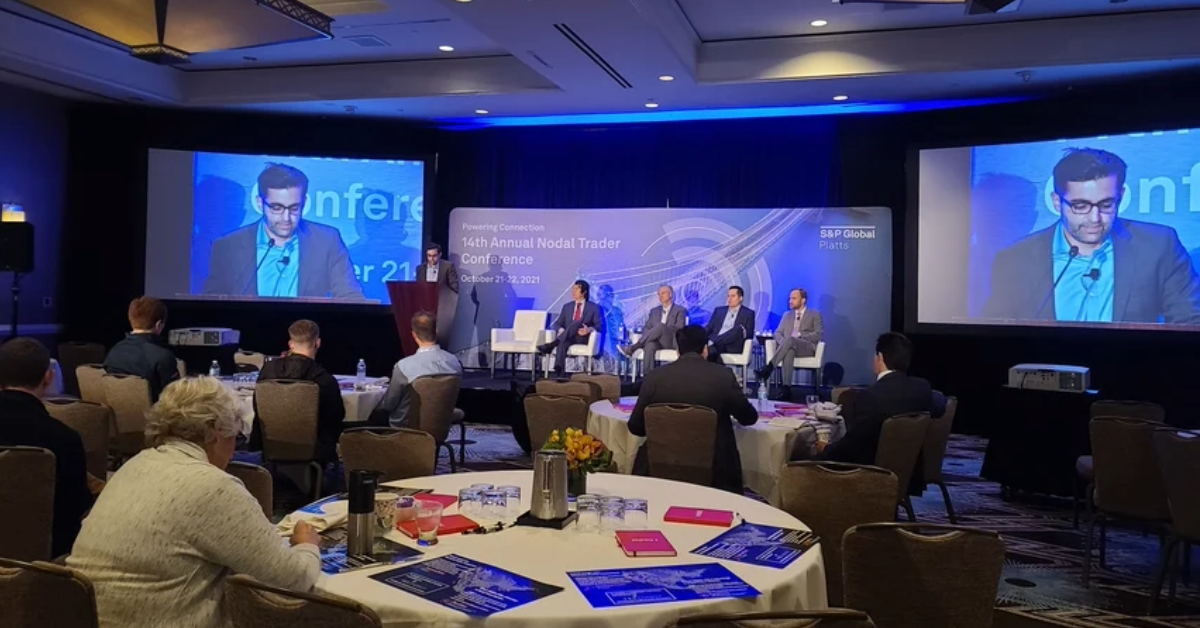Removing Modelling Barriers with Quality Data
PLEXOS Datasets for Europe By the mid-2030s, all scenarios point to the European power mix changing fundamentally from a predominantly thermal system...
4 min read
 Carlos Romero
:
July 14, 2022
Carlos Romero
:
July 14, 2022

The Independent Electricity System Operator (IESO) is about to finalize its multi-pronged process called Market Renewal Project. This initiative aims to redesign the market rules and operations in the Ontario province market. Learn how organizations can take advantage of the market change by updating businesses processes and workflows.
The current electricity market started in 2002, and the IESO has successfully operated reliably and efficiently in this zonal electric market. However, the worldwide energy transformation makes it imperative for the IESO to adapt. Transitioning to a nodal market will enable IESO to address issues such as increased penetration of renewable generation, de-carbonization initiatives, active participation of demand response, transmission investment needs, and greater price transparency.
One of the Market Renewal Project's main changes is moving to a nodal electric market. The IESO is also introducing reforms, including incremental capacity auctions, a binding Day-Ahead energy market, and 'Enhanced Real-Time Unit Commitment.' Enhanced Real-Time Unit Commitment will allow generators to make more granular offers reflecting cost items such as no-load, startup, and incremental energy costs.
One central element of the market redesign is transitioning from a zonal market to a nodal market. At a high level, transmission constraint within the zone is disregarded in zonal markets, creating one price across the entire zone for all market participants.
Conversely, in a nodal market, prices are calculated at the node level. Without transmission limitations (constraints), electrons will flow freely across all nodes. The most efficient (cheaper) resources will meet the market obligations at the same price for everyone.
Nodal modeling allows an optimal power flow simulation to be constrained to individual line ratings. Transmission constraints limit the flow of efficient electricity and force a less efficient (more expensive) resource to become the marginal provider. This creates price differentials between nodes, establishing what is known as Locational Marginal Prices (LMPs). Locational Marginal Prices include three cost components: marginal energy, congestion, and losses.
These new workflows and processes require market participants to upgrade their existing applications and data sources and acquire new ones. The functional and technical requirements should observe the needs of the nodal market planning, operations, and settlements. Some critical aspects for consideration for these new workflows and applications include:
These new workflows and processes require market participants to upgrade their existing applications and data sources and acquire new ones. The functional and technical requirements for the new applications landscape should observe the needs of the nodal market planning, operations, and settlements. Some critical aspects for consideration for these new workflows and applications include:
Market participants require a complete and updated dataset of the entire market footprint. Every node, region, generation and transmission asset, load, commissioning and decommissioning project must be mapped, connected and detailed.
Volume: Data volumes grow dramatically in a nodal market. From a few zones to tens of thousands of nodes.
Velocity: The speed at which data is produced and transferred increases. Raw data needs to be synthesized into business decisions faster than ever before.
Variety: Data granularity increases exponentially. Sub-hourly, hourly, daily, monthly, and annual data is now available for analysis and consumption.
Versioning: Data quality will depend on when it was last updated, and updated data provides a higher value in the decision-making process.
Market modeling and simulation, as well as portfolio optimization, become a more critical component of operational and bidding decisions. Some key elements include:
Market modeling: Need to model and simulate the market following the same methodology as the market operator. Transmission network, congestion, and FTR capacity auctions play a more relevant role in risk management and revenue forecasts.
Multi commodity optimization: The production cost model solution needs to co-optimize multiple commodities in a single and unified model. Including all physical assets and contracts, financial commodities, virtual contracts/markets, and arbitrage opportunities between commodities and markets.
Advanced technologies: Renewable energy integration is creating the development of sophisticated assets which create lucrative business opportunities. Still, they also come with new operational and bidding complexities that need careful management. Such emerging technologies include: complex cascaded hydro, pumped storage hydro, combined heat and power, hydrogen, geothermal, batteries and energy storage systems, electric vehicles, and microgrids.
Digital twin: Bidding into a nodal ISO market will require an accurate representation of all operational characteristics and the simulation of the market rules and settlements. Dispatch instructions, commitment schedules, outage and maintenance plans, ramping capabilities, will have binding financial implications. It is crucial to submit market bids/offers that accurately reflect the assets' operational conditions and capabilities.
Performance: The speed at which data and decisions are now made and the increased sophistication of the modeling requirements make performance an essential requirement. Better and faster processing capabilities are required, and having a flexible and scalable infrastructure will support improved performance for faster simulations while lowering overall costs.
Effective market participation requires a better enterprise approach to close the gap between business units.
Integration: Automated and programmatic data integration between applications within a business unit and across business units. Reduce manual processes to increase speed and reduce potential errors.
Collaboration: Aside from data and applications integration, collaboration across internal stakeholders is essential. Specific visualization and data presentation are required for each user persona.
Data versioning and security: Ability to review data changes, who made them, and when. Ability to roll back changes or roll back data versions.
Business continuity: Market decisions are happening on a near real-time basis. Losing access to modeling applications, decision-making support tools, and data can expose the business to unacceptable risks.
The ability to quickly turn raw data into effective decisions is the difference between increased profitability or facing severe operational and financial risks. The high-level process includes raw data integration, movement and assembling, model construction and configuration, simulation runs, scenario analysis, reporting, and information insights to support decision making. A solution that can automate, shorten and expedite this process is invaluable in nodal markets. Key areas where fast analytics and instant insights can make a big difference are:
Flexible reporting by user-persona will improve the market participant's ability to understand, analyze and share information across the organization. Not every information end-user needs the same data, format, or visualization templates, and presenting information to each user type in a specific and relevant template enhances the organization's capacity to make faster and more effective decisions. Some areas of consideration for enhanced reporting:
These are all some high-level considerations when transitioning to a nodal ISO market. These considerations may apply to some market participants more than to others because of existing business practices and advanced modeling capabilities in-house today. But in any case, reviewing these elements and comparing them against current applications can be a first step in effective preparation for the upcoming market renewal project in the IESO.

PLEXOS Datasets for Europe By the mid-2030s, all scenarios point to the European power mix changing fundamentally from a predominantly thermal system...

As energy market participants work to keep up with an ever-increasing demand for electricity, asset siting — or the strategic placement of power...

Energy Exemplar recently participated in the panel Electric Power Markets – Role of Renewables & Environmental Trading at the Platts Nodal Trader...